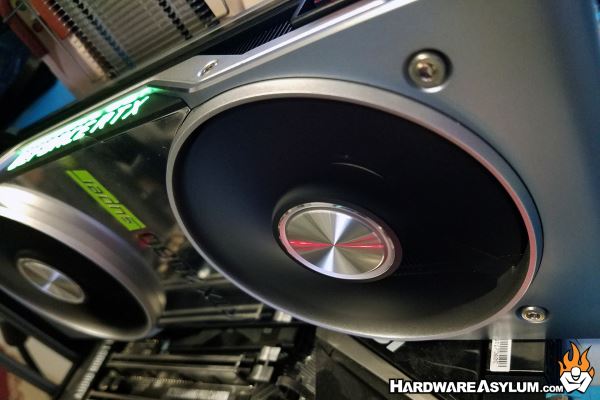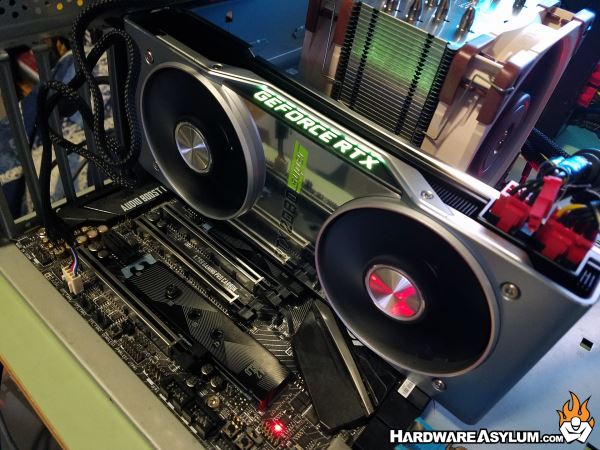Nvidia GeForce RTX 2080 Super Video Card Preview
Author: Dennis GarciaIntroduction
For those of you who listen to the Hardware Asylum Podcast you’ll know that I was rather critical of NVidia releasing the Ti edition video cards at the same time as the regular ones. Overall this seemed like a bad move however, considering the landscape at the time and the fact that only the 2080 got the Ti treatment it wasn’t too bad. In fact it gave people the chance to dial in the performance they wanted. Or more accurately dial in the performance they could afford.
In this review we will be looking at the new GeForce RTX 2080 Super. By the time you are reading this both the 2060 Super and 2070 Super have already been released with the promise that they are a performance upgrade over the previous edition, in a way giving us the 60-series and 70-series Ti editions we were expecting.

The 2080 Super is a little different. This card is a full out replacement for the 2080 with more SM, more CUDA cores, higher clock speed, more texture units and more memory bandwidth. NVidia claims it is faster than the Pascal based Titan Xp and costs less than the previous RTX 2080 by $100 USD. Combine that with what makes the RTX special and you have a very tasty combination.
Prior to the launch of Turing the rendering of ray traced images in real time was thought to be nearly impossible due to the number of calculations that needed to be done and how fast they needed to be calculated to still deliver fluid video performance. Turing changed all of that by improving GPU performance and the shader architecture so that floating point and integer operations can be performed simultaneously. Ray Tracing and Tensor cores were included with the dedicated task of handling all of the Ray Tracing calculations. Similar to how an Asic is faster at calculating cryptocurrency the dedicated cores can offload the complex calculations as to not impact framerates.
While Ray Tracing is a major part of what makes RTX unique there are other techniques that have been developed to further improve performance. Deep Learning Super Sampling (DLSS) uses deep learning and AI to train the GPU on how to render images with similar quality to traditional anti aliasing (AA) but with higher performance. Variable Rate Shading (VRS) is another next generation graphics feature that offers better performance by varying the shading rate in different parts of the scene based on rate of motion and level of detail. Basically the GPU can decide not to render a texture that is too far back in a scene that you wouldn’t be able to see it anyway.
Finally Mesh Shading adds new stages to the graphics pipeline so that object list processing can be moved from the CPU to a highly parallel mesh shading program on the GPU. This enables developers to create scenes with more objects and richer levels of detail with improved performance.

- Graphics Processing Clusters 6
- Texture Processing Clusters 24
- Streaming Multiprocessors 48
- CUDA Cores 3072
- Tensor Cores 384
- RT Cores 48
- Texture Units 192
- ROP Units 64
- Rays Cast 8 Giga Rays/sec
- Base Clock 1650 MHz
- Boost Clock 2825 MHz
- Memory Clock: 7751 MHz
- Memory Data Rate 15.5 Gbps
- L2 Cache Size 4092 K
- Total Video Memory 8192 MB GDDR6
- Memory Interface 256-bit
- Total Memory Bandwidth 496.1 GB/s
- Texture Rate 348.5 GigaTexels/sec
- Power Connectors one 6-pin, One 8-pin
- Recommended Power Supply 650 Watt
- Thermal Design Power 250 Watts
An interesting side story about the RTX 2080 vs the RTX 2080 Super. NVidia claims that the RTX 2080 was factory overclocked out of the box. In a way that makes sense given that the RTX 2080 had a clock speed of 1515Mhz and is really only 5% slower than the RTX 2080 Super. To attain that you strike a balance between heat/voltage/frequency until you reach a performance target and let it go.
Thing is, this is NVidia, they control the frequency from the factory so saying that their card is overclocked is kinda skirting around the issue and/or compensating for something. Now EVGA or ZOTAC saying their cards are overclocked is a different story since they are taking the chip from NVidia and making tweaks of their own.
Either way this card is “Super” fast and I’m already seeing some really promising scores from Timespy and Firestrike. Let’s hope it translates well so some gaming benchmarks as well.

